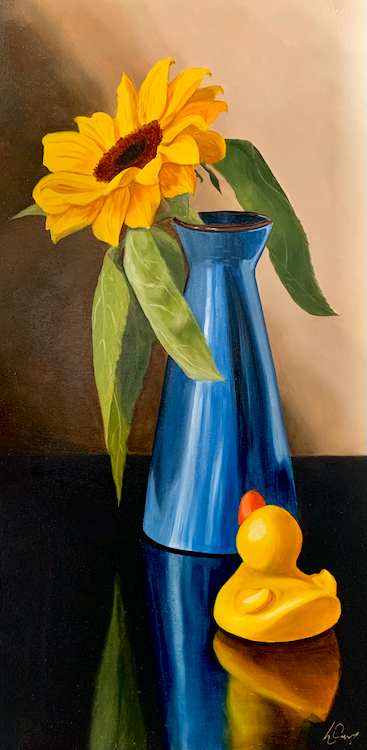This artist’s story is close to my heart. Apart from the both of us being Canadians, I was also in the journalism/ media industry and was also forced to find another way to exercise creativity as outlets were limited. Though I went through that transition in Hong Kong and ended up starting this art and culture magazine instead of becoming an artist with my visual arts degree, I fully understand what he means when he talks about how desperation is a part of the package.
As he mentions, British Columbia is gloomed with a filter of blues and greys almost 365 days of the year. That does not mean there is no beauty within, but it takes guts to take a leap of faith and venture elsewhere until you find your real passion and stick to it.
In this interview with Curry, he not only talks to us about his creative process, but his memorable moments with his audiences, his influences and seriousness on technique, and how food is his short-hand form of communication with people.

i) Can you tell us a little bit about yourself and how you started painting in 2000?
I’m originally from a small fishing village on Canada’s East Coast. I studied journalism in Halifax, Nova Scotia, and worked as a journalist for over two decades. In 1991, a position opened in Vancouver with my then employer and so I made the move to the West Coast. Journalism is a wonderful field of work but, unfortunately, at the time there were not a lot of creative outlets for a working journalist. My employment contract made it such that I could not pursue “sideline” writing opportunities. And so, I found myself drifting into painting primarily as a form of creative expression. Then, in 2012, as traditional media outlets were beginning to see their business model crumbling, my position with my employer was eliminated. And so I decided to leave journalism to pursue art full-time. I had spent a few years training with a local master artist in my spare time and so I was able to make the leap using the knowledge I had learned in his atelier to find my footing.
ii) Why did you choose to do still-life paintings (or did it choose you)?
Initially, I tried to paint landscapes. But, the problem I had was that the color palette of the region where I live is dominated by cooler tones of greens, blue and grey, and I’m not drawn to that palette. So, I turned to a region that is very dear to me – the deserts of the American Southwest for inspiration. The landscape there is dominated by warm earth tones, reds, ochres, and very dramatic land formations. The difficulty is that people who live in a temperate rainforest-like British Columbia are not particularly interested in collecting American Southwest imagery. Very little of that work connected with local collectors, so I cast about for a new direction and a source of inspiration.
I turned to an artist whose work I had fallen in love with while I was living in Halifax, celebrated Canadian artist Mary Pratt. To me, she set the standard for what a modern approach to still life art could be. Her work is exciting, stimulating, intimate, and so much more. They completely dismantle the idea that still-life is in any sense a lower form of art. I wanted to bring some of that sensibility to my own still-life work while also paying homage to the photorealist movement of the late 1960s – where skill and precision were brought to the forefront as tools for artistic expression.
iii) What is contemporary hyperrealism to you and who were the artists that have influenced you?
I always point to the works by Pedro Campos and Tjaaf Sparnay when I am asked this question. They are two of the giants of the contemporary hyperrealist movement. Campos’ beautiful compositional approach and emphasis and intricacy on rendering precise surface textures are mind-blowing. Sparnay’s color palette is the stuff of dreams. You can stand in front of one of his paintings and almost feel it giving off a physical warmth. Amazing stuff. That said, I refer to my own work as ‘influenced by hyperrealism’ because I feel like it walks a line between that and more traditional approaches.
For instance, many hyperrealist artists use airbrushes to achieve perfectly smooth color gradients in their work, whereas I’ve stuck to using traditional brushes. I’ve also made the choice not to use acrylic paint – and so my palette is not quite as vibrant in many instances as those of the hyperrealists. But, there’s a line that can be drawn between my work and the hyperrealist movement. It’s just that some days the line is short, and some days it’s much longer.
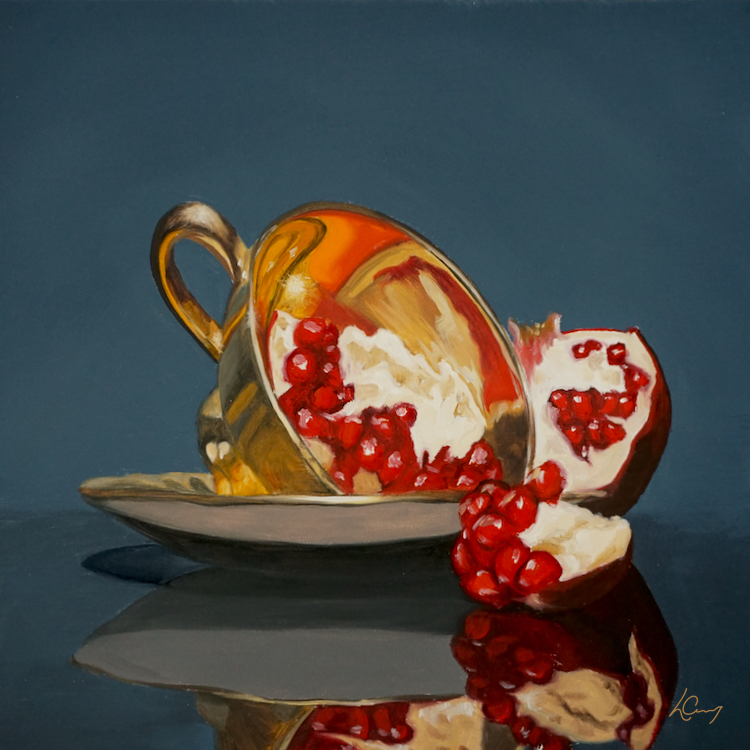
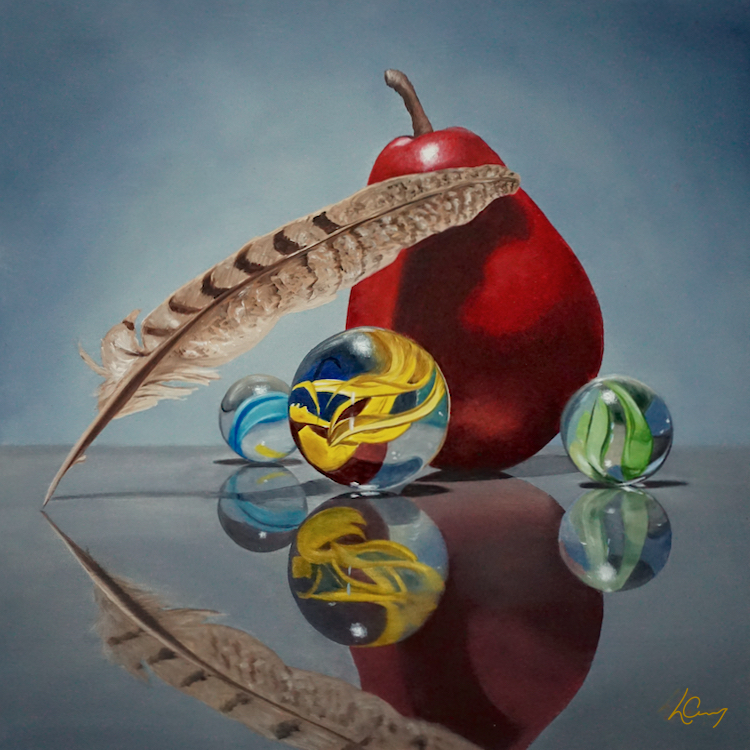
iv) How do you see yourself reflected in your paintings?
There’s a secret language written on the surface of every painting. For the most part, only the person who created the piece can fully understand it. When I look at my paintings I can tell if I was in a good mood while I was painting it or if I was sad or bored, or any of a hundred emotions. I can read the thoughts that were occupying my mind at the time. The painting becomes, in a sense, a visual diary.
I was exhibiting at a fair once, and a woman came by my booth. Upon seeing my work, she became quite emotional. I approached her and asked if she was ok and she said that, yes, she was, but that she had never seen so much loneliness expressed in art. I would not have qualified my work as expressing loneliness but rather solitude. Those two things are, of course, two sides of the same coin. But I think the distinction is worth noting. So, in all these ways, my work is a reflection of my inner world. It could not be any other way, even if I wanted or tried to hide it. I suspect it is much the same for all artists.
v) Is there a particular art piece that has brought you the most discomfort and the most growth?
I did a self-portrait a few years ago – a piece that haunts me to this day. The pose I adopted in it was a play on Gustav Courbet’s Le Désespéré (The Desperate Man). In part, it is a humorous piece, but it’s also self-revelatory to an extent that is quite uncomfortable for me.
Being a full-time artist is not an easy path. You have to set aside a huge amount of self-doubt and anxiety about things like financial stability before you pick up your paintbrush and decide to make a go of it. And moments – hours, days, months, sometimes years – of desperation are part of the package. You can’t avoid that, and you shouldn’t want to avoid it, because the bad days make you appreciate the good ones all the more.
That painting hangs at the entrance to my studio. It’s a daily reminder of the commitment I have made to hold to my discipline when my resolve waivers and pushes through the obstacles. As others have said, it’s important to remember that the ultimate objective is not so much to make a living from art as to make a life from it.
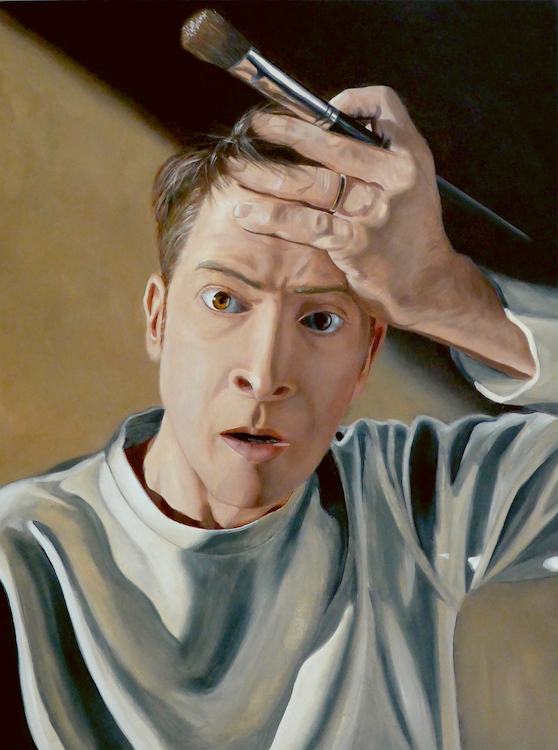
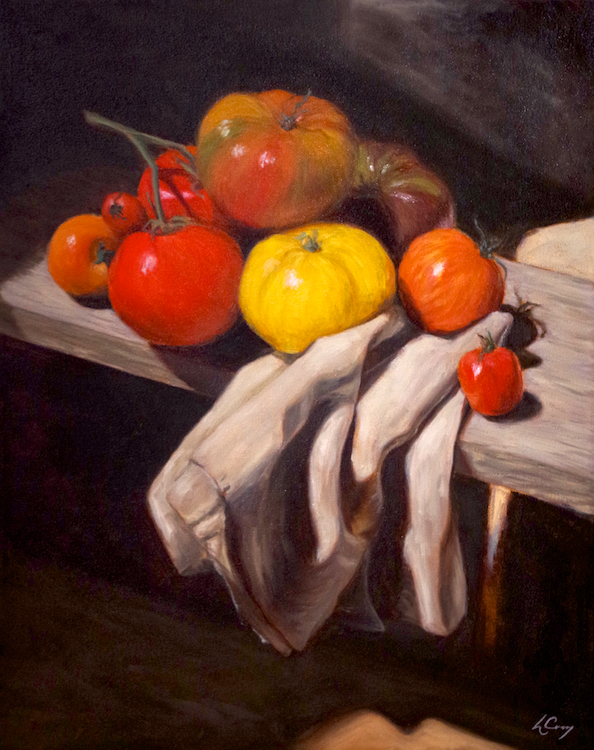
vi) Is there a story you can share with us where an audience tells you a particular piece by which you have sparked magic in them?
One of the very first still-life paintings I did was of some heirloom tomatoes on a sunlit shelf. Although the composition is in keeping with all my work, the brushwork style is quite different from my current one. I was exhibiting this painting at an art fair when I noticed an older gentleman looking at the painting with a big smile, which is always a good sign. He told me the painting took him back to his childhood.
One day, his mother had warned him not to touch her tomato plants because the fruit wasn’t ready yet. But, on a warm summer afternoon, he simply could not resist and had snuck out and grabbed a tomato and hid in the copse nearby to enjoy his ill-gotten gains. The story stayed with me because, as a child, one of my favorite things was to take the salt shaker and go down to my mom’s garden and pick a sun-warmed tomato right off the branch and eat it right there in the garden, sitting on the ground.
I find that there is a universality to the role of food in our lives. Different cultures eat different things, of course, but a human being’s relationship to those things that sustain us physically – that’s something everyone can relate to. Good food, junk food, too much food, too little food, the wrong kinds of food, craving food, hating food – there’s no way to be a human being without your life intersecting one or more of these. It becomes a cornerstone of our formative experiences.
Good food, junk food, too much food, too little food, the wrong kinds of food, craving food, hating food – there’s no way to be a human being without your life intersecting one or more of these. It becomes a cornerstone of our formative experiences.
To me, that is a rich vein of creative inspiration. It is a form of short-hand communication I can use to connect to people. At the time I painted that tomato piece, I was preoccupied with Caravaggio’s approach to lighting a scene – something I’ve come back to repeatedly over the years – because ultimately, light is what does the heavy lifting in a painting. And so, I wanted that sense of warm light as a portal into what a simple thing like a tomato can mean. It might not mean the same thing to you as it does to me. But the odds are good that we’ll both have some connection, on some level, and that allows us to find a way to begin having a meaningful conversation.
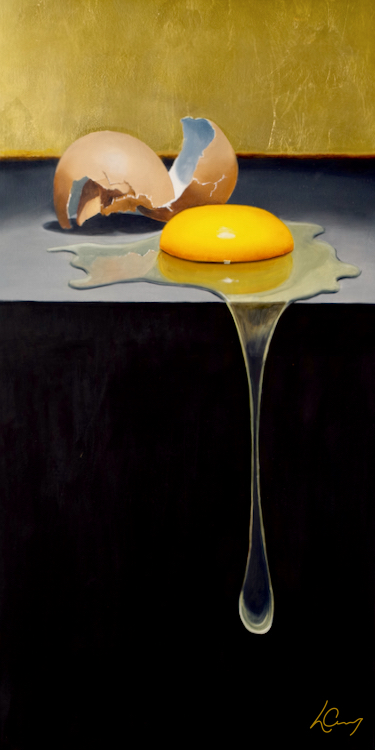
vii) Would you say that you view your still life paintings as also being trapped in time, or are they ever-changing?
My art is absolutely a product of its time. How could it not be? It may or may not transcend this time we are in – I’ll be long gone before that will be decided. But I have no problem with the idea that it could one day seem old-fashioned. Successive generations reinterpret the past constantly and have no hesitation when it comes to finding it wanting in some way or other. As an artist, I am only accountable for my own vision in my own time. Throughout the act of creating the piece, I have control. If a painting fulfills what I set out to do when I started, then I feel I’ve done my job and protected the integrity of that initial creative impulse. But, once I let it out of the studio, that’s the end of my influence. People can – and will – bring whatever their own experiences are to the moment of viewing the work. And it will – and should – color their interpretation of it. Otherwise, there’s no way to find the connection to our own humanity that all art offers us.
How boring would the world be if everyone viewed art in exactly the same way?
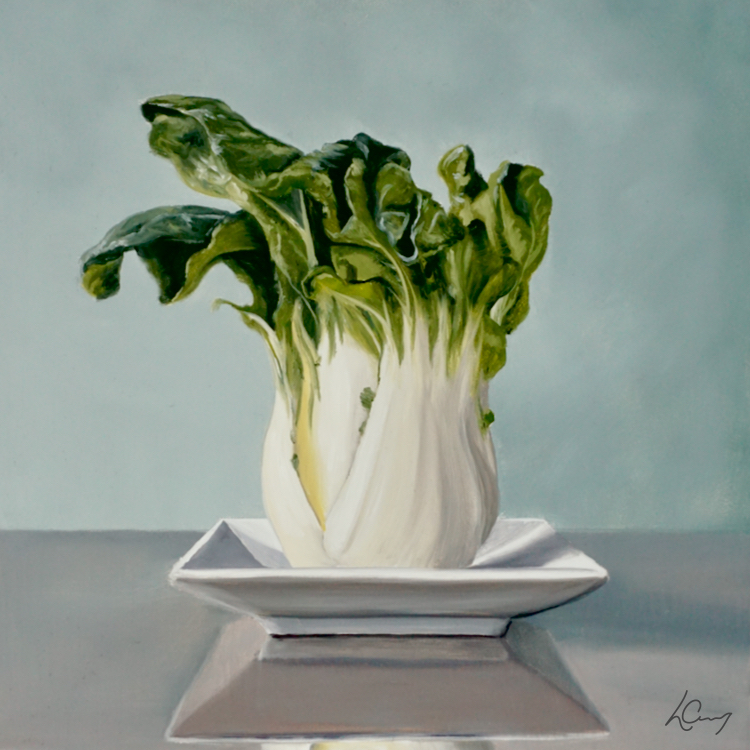
viii) The titles of your paintings often induce a sense of humor. Does the painting come first, or does the idea of the title come first?
It’s true, I like a touch of humor in art, and I almost never let the opportunity to use a good or funny wordplay go by without using it. Sometimes I have a title in mind long before I compose an image and sometimes the title only comes to me when I put my paintbrush down and decide a piece is done.
There’s no shortage of ‘Serious Art’ in the world. I really don’t have anything to add to what has been and is being said on that front. I am, however, dead serious when it comes to the skill I want to bring to the painting surface. I am on a permanent quest to improve my technique. But, as for the subject matter, I don’t see a problem allowing the viewer a moment of respite or levity.
My compositional approach is fairly intuitive – in the sense that I will often spend several hours on composition until it ‘clicks’ for me. I’m usually looking for as much drama in the negative space as the positive. As for the light, I often prefer and rely on very high key lighting to make the objects ‘pop’ off the surface. People will often say of my work that they feel like they could just reach in and grab the item. That’s when I know I’ve hit the mark.
As for the process, for me, the creative act happens entirely at that compositional level. The selection of the subject, the arrangement of the objects in the piece – that is where a painting succeeds or fails. And so, depending on the composition, sometimes I work from life but mostly I work from my own photos – particularly if there are a lot of reflective surfaces in the composition. The rest, the laying down of the paint, is all down to skill. Some days that come easily, some days not so much.
viv) You describe your works as being “an ongoing exploration of the constants of life that connects us all as human beings: cherished objects, childhood memories, food, the kitchen, and so on.” Can you tell us what is your favorite object to draw and what that object means to you?
My absolute favorite object in my entire collection of still-life props is my rubber duck, James Pond. Several of my collectors are constantly on the lookout for my rubber duck paintings so I almost never have one in the studio but I recently reacquired a piece called “Friends For Life” that I think I may pull from circulation and add to my personal collection. It may seem odd, but a simple rubber duck is – to me – pretty much my entire art practice wrapped up in one object. It is brightly colored, it brings a smile to my face whenever I see it and reminds me that, like every single artist that has ever walked on this planet, the best art I ever made was when I was a kid.
